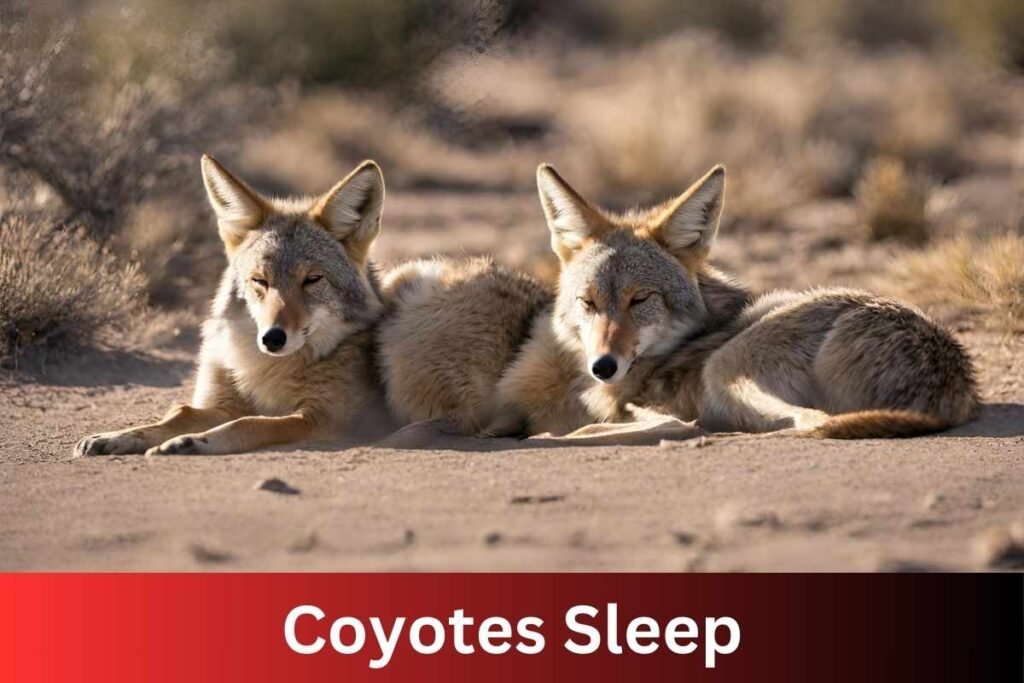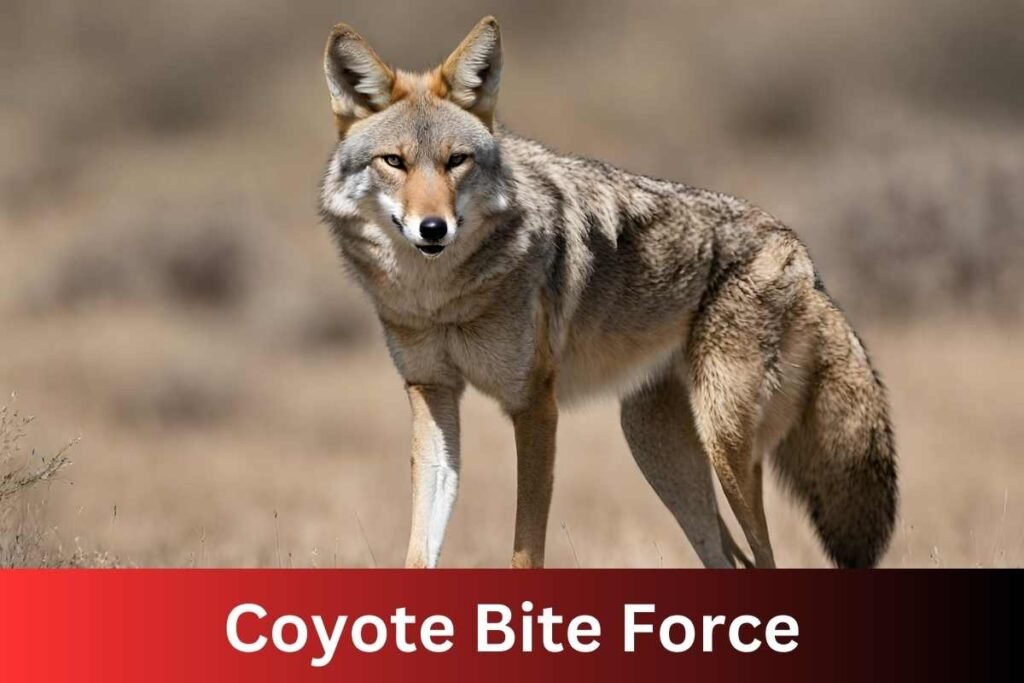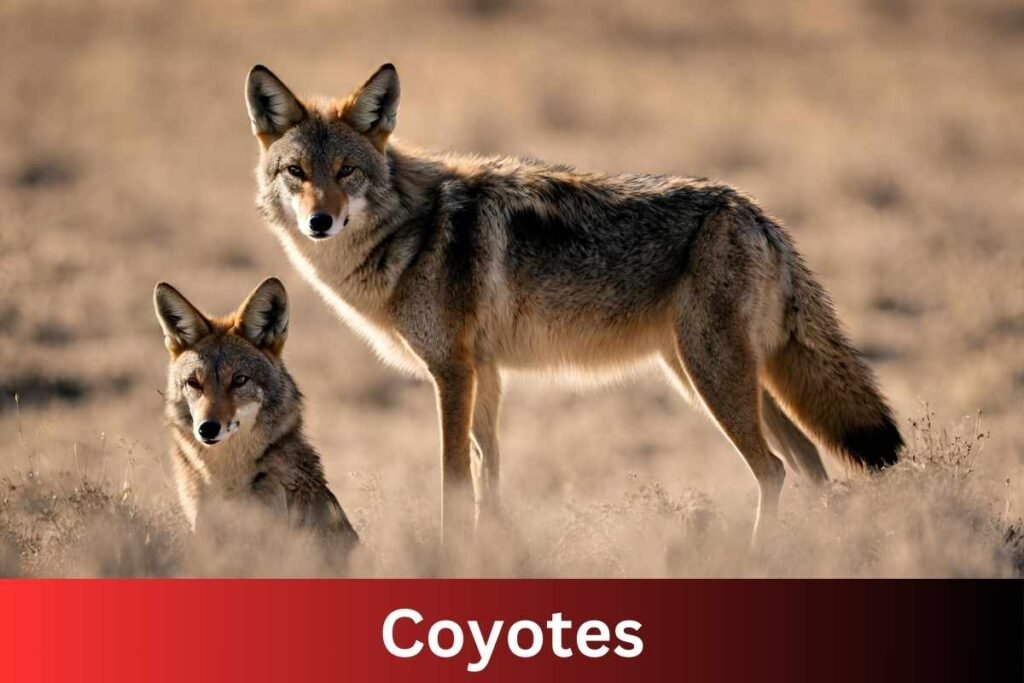Table of Contents
Coyotes sleep, those elusive creatures of the night, have long intrigued and captivated us with their mysterious ways.
One of the most common questions about coyotes revolves around their sleeping habits—are they truly nocturnal, or do they have a different schedule?
In this comprehensive guide, we’ll delve deep into the world of coyotes’ sleep, exploring when and where they sleep, how their habits change with the seasons, and much more.
Coyotes commonly sleep in prairies, desert settings, dens in urban areas, and wooded foliage and shrubbery in wild locations. So, let’s embark on this journey to uncover the secrets of coyotes’ slumber.
Where Do Coyotes Sleep
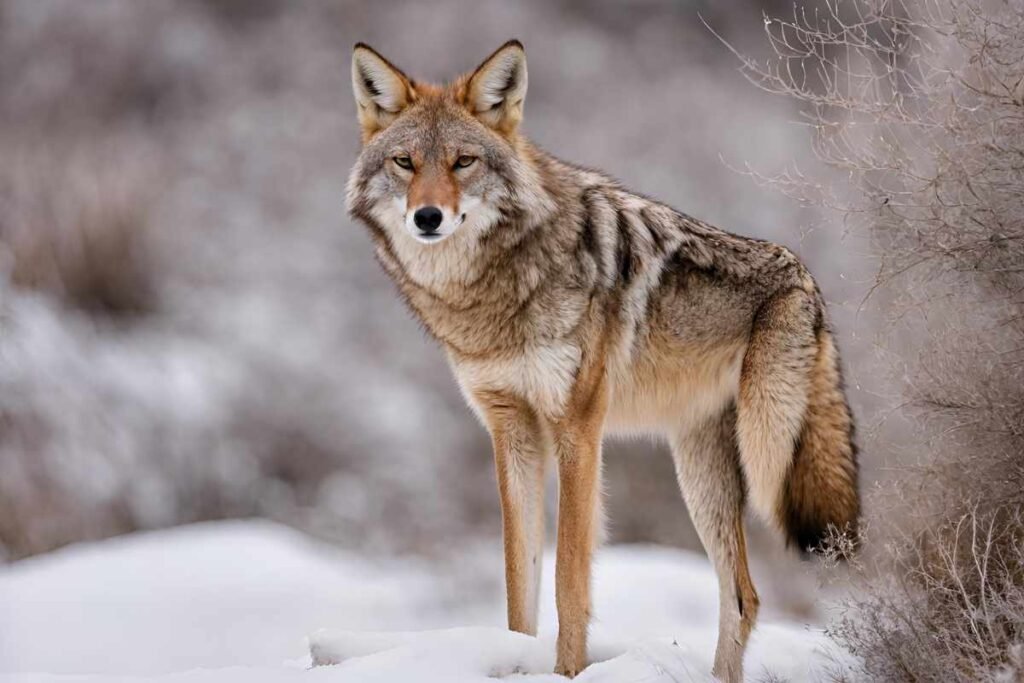
Coyotes are masters of adaptation, and their choice of sleeping spots reflects this. Unlike some animals that rely on traditional dens, coyotes are known to sleep in a variety of locations.
While some may seek refuge in dens dug by other animals like raccoons or badgers, others may opt for hollowed-out tree stumps or rock outcrops. In urban areas, coyotes may even find solace in parks, golf courses, or wooded foliage.
Their preference for hiding spots during sleep underscores their elusive nature and their instinct to avoid human contact.
Where Do Coyotes Go During the Day
Contrary to popular belief, coyotes aren’t strictly nocturnal creatures. While they may be more active at dawn, dusk, and nighttime, they aren’t confined to these hours.
During the day, coyotes often retreat to secluded areas such as dense vegetation, thickets, or underbrush to rest.
These hidden spots provide them with the security they need to avoid predators and human disturbances while they catch up on much-needed sleep.
Are Coyotes Nocturnal Animals
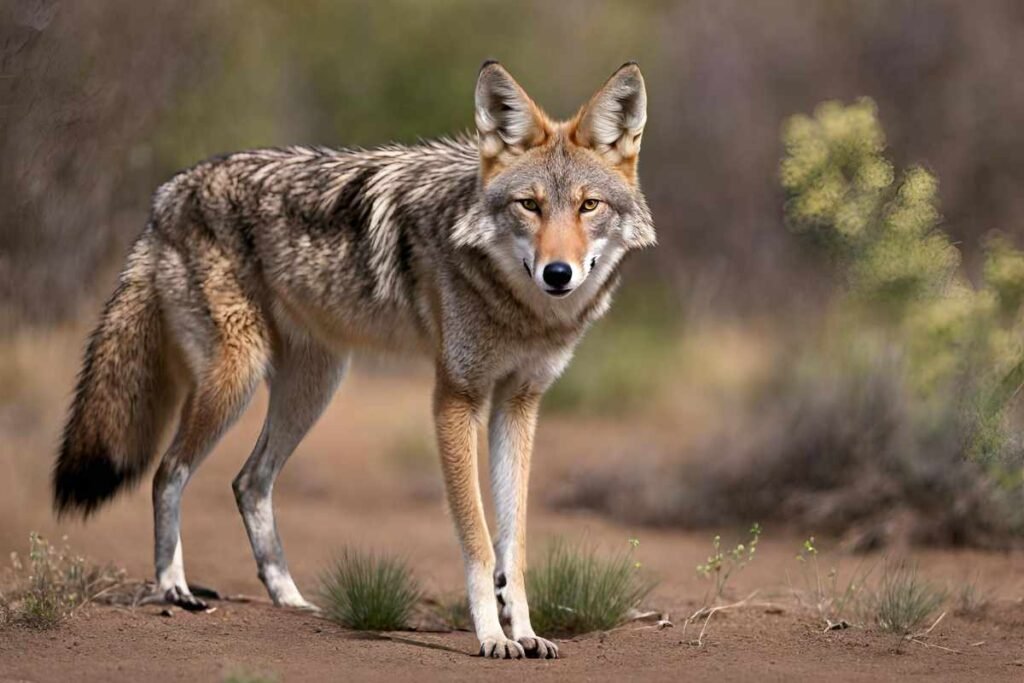
The term “nocturnal” often brings to mind images of creatures that exclusively roam the night. However, coyotes blur the lines between diurnal and nocturnal behaviour.
While they may be more active after sunset, coyotes are also known to hunt and move during daylight hours, especially when food sources are scarce or when caring for their young.
This flexibility in their activity patterns allows them to adapt to various environmental conditions and maximise their chances of survival.
Where Do Coyotes Sleep During the Day
Coyotes prioritise safety and seclusion when choosing their daytime resting spots. Whether it’s a dense thicket, a secluded corner of a park, or a hidden burrow, coyotes seek out locations that offer protection from potential threats.
Their ability to blend into their surroundings makes them expert hiders, often going unnoticed by unsuspecting passersby.
Where Do Coyotes Sleep in Winter
As the temperatures drop and snow blankets the landscape, coyotes must adjust their sleeping habits to survive the harsh winter conditions.
While some may seek shelter in dens or burrows dug into the snow, others may take refuge in caves, underbrush, or fallen timber.
Their thick winter coats provide insulation against the cold, allowing them to endure even the most frigid nights.
Seasonal Variations in Sleeping Patterns
Coyotes sleep habits can vary depending on the time of year and environmental conditions. During the spring and summer months, when food sources are abundant and pups are being raised, coyotes may spend more time hunting and caring for their young, resulting in shorter periods of sleep.
In contrast, during the winter months, when food may be scarcer and temperatures drop, coyotes may conserve energy by sleeping for longer periods and seeking shelter in dens or other protected areas.
Adaptations for Safety and Survival
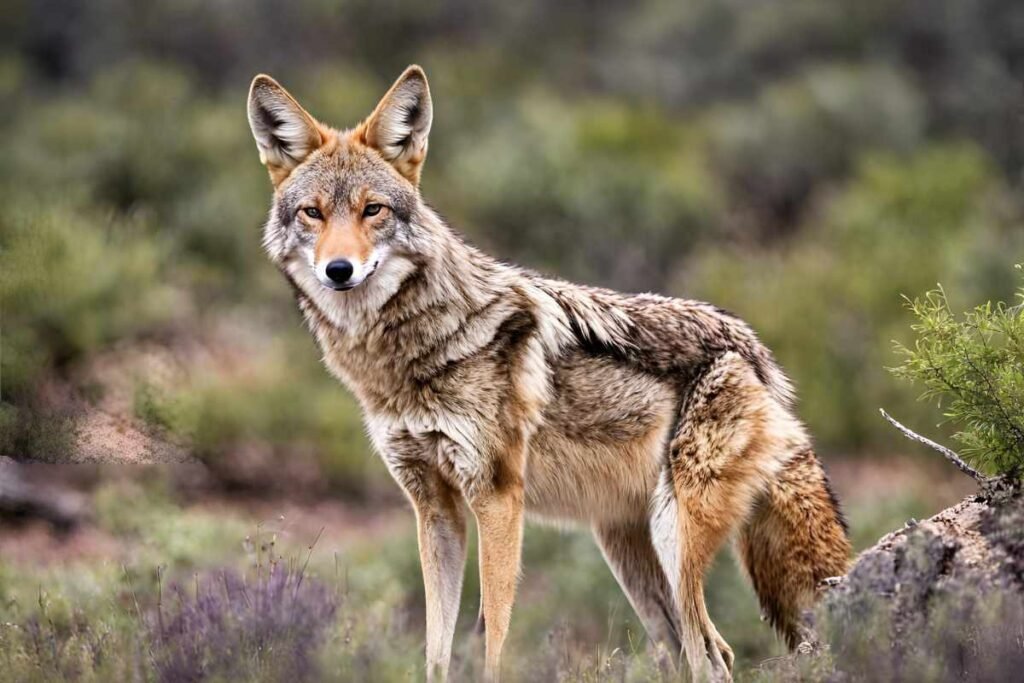
Coyotes have evolved a range of adaptations to ensure their safety and survival while sleeping. Their keen sense of hearing and smell allows them to detect potential threats even while they rest, enabling them to quickly respond to danger.
Additionally, their ability to camouflage themselves in their surroundings helps them avoid detection by predators and humans alike.
By selecting hidden and secluded sleeping spots, coyotes minimise their risk of encountering danger and maximise their chances of survival in the wild.
Conclusion
In conclusion, coyotes sleep habits are as diverse and adaptable as the landscapes they inhabit. While they may exhibit nocturnal tendencies, they are not bound by strict rules of day and night.
Instead, coyotes sleep where they feel safest, whether it’s in a hidden den, under the cover of darkness, or amidst the hustle and bustle of urban life. By understanding their sleeping behaviours, we can gain a deeper appreciation for these fascinating creatures and the role they play in our ecosystems.
So, the next time you catch a glimpse of a coyote slumbering in the shadows, remember the intricate dance of survival that unfolds with each passing night.
FAQs
Do coyotes sleep in the same spot every night?
Coyotes do not necessarily sleep in the same spot every night.While some may return to a particular den multiple times, others prefer to create new dens within their territory to avoid the accumulation of insects, droppings, and contamination of food.This behaviour helps them maintain cleanliness and minimise potential risks in their sleeping areas.
How do coyotes sleep?
A: Coyotes have diverse sleeping habits; they may sleep above ground in the open or seek cover in dense vegetation, under overhanging rocks, or in secluded spots such as thickets. This variability allows them to adapt to different environmental conditions and minimise the risk of predation while ensuring their safety and comfort during rest.
Where do coyotes bed down during the day?
During the day, coyotes often bed down in covered open areas, seek out raised grounds, or retreat to dens for shelter and safety. This behaviour allows them to remain concealed from predators and potential threats while finding comfortable resting spots in their habitat.
Where do coyotes sleep in winter?
During winter, coyotes may seek shelter in dens, burrows, caves, or underbrush to protect themselves from the cold. Their thick winter coats provide insulation against the elements, allowing them to endure harsh winter conditions.
Where do coyotes sleep when it snows?
When it snows, coyotes seek shelter in any available cover, such as fallen timber or hollow logs, to protect themselves from the elements. These sheltered areas provide insulation against the cold and help them conserve body heat, ensuring their survival during harsh weather conditions.
Do coyotes hunt during the day?
Yes, coyotes may hunt during the day, especially when food sources are scarce or when they need to feed their young. However, they are also known to be more active at night, particularly during dawn and dusk.
How long do coyotes live?
In the wild, coyotes typically live for 6 to 8 years, although some may live longer. In captivity, they may live up to 21 years or more.
Do coyotes pose a danger to humans?
Coyotes are generally wary of humans and will typically avoid confrontations. However, they may become more aggressive if they feel threatened or if they associate humans with a source of food. It’s important to exercise caution and avoid approaching or feeding coyotes.
Do coyotes mate with domestic dogs?
While it is possible for coyotes and domestic dogs to mate, it is rare, especially in urban settings. Coyotes are highly seasonal breeders and may have different estrus cycles than domestic dogs, making successful mating less likely.
